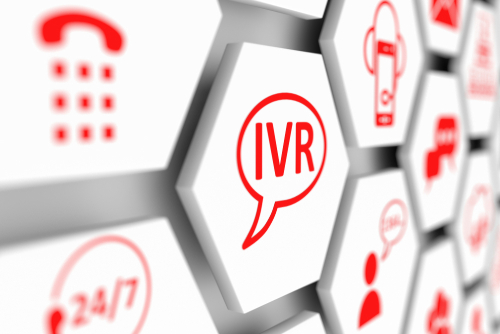Updated by 12.06.2024
How Does E-Complish Collect Nacha Compliant ACH Transactions Via IVR?
At E-Complish, we believe in giving our clients, and their customers, choices.

And so it is our direct has two options for the authorization of a Single-Entry Verbal TEL ACH Transaction.
Acceptance of payments via IVR is becoming the norm for most businesses. Every now and then we get the question of how we are accepting ACH transactions in a compliant manner. This article gives a little education on ACH compliance as it relates to IVR acceptance.
As you may or may not know, according to NACHA Rules, which is the governing body overseeing all ACH rulemaking and procedures, a Single-Entry TEL (known as Telephone Initiated transaction), needs to have either a verbal recording of authorization (whereby a consumer verbally records his authorization to ACH debit his bank account) or a written confirmation sent once the telephone call is done. Notice, the rules do not state “Authorization”, they state “written confirmation”. In other words, no signature is required since this is a verbal transaction. Our IVR provides both verbal recording and written confirmation options, but what many businesses and consumers don’t realize is that per NACHA Rules for Single-Entry TEL transactions, the requirement of both a verbal recording and a written confirmation is not necessary for a single, one-time ACH transaction.
What this means for businesses and consumers is that a verbal recording for Single-Entry TEL transactions is unnecessary if you have a written confirmation. If all that the business collects and stores is a written confirmation for a Single-Entry TEL ACH payment, that’s perfectly alright. Where we hear confusion all the time, even with banks that are supposed to know the NACHA Rules, is that there must be a verbal recording for all telephone-initiated transactions. This is just not true, and this has confused a lot of people worried about compliance. The confusion lies in the type of TEL transaction. Telephone transactions come in two varieties, single, one-time transactions and recurring, (payment plan), transactions. The NACHA Rules are different for Single-Entry TEL vs. Recurring TEL transactions.
You see, Nacha has different rules for different transaction types, called an ACH SEC, (Standard Entry Class), Code. In all, there are about twenty-five (25) different ACH SEC Codes, all with their own rules for how the authorization must be obtained. We already know that a Single-Entry TEL needs EITHER a verbal recording OR a written confirmation, (not both). But this is where the confusion comes in for most people, Recurring TEL transactions, (a payment plan that is being set up over the phone), must have BOTH a verbal recording and a written confirmation detailing the payment plan. Recurring TEL transactions are the only transaction type that requires both verbal recording and written confirmation, but yet banks and financial services tend to make this the rule for all TEL transactions, even Single-Entry TEL transactions, which is just not correct.
Now, here’s the salient point for IVR: Nacha clearly defines what should be on the confirmation notice (listed below), but the delivery of the notice is not defined in Nacha Rules. We saw this as an opportunity for a better caller experience. We knew that we could allow our IVR to give the customer the option, without it being an obligation, of recording a verbal authorization. A customer is informed that in doing a verbal authorization, they are going to enter into a four-to-five-minute process. But on the other hand, they could choose to have the payment sent to them as a text receipt, which takes less than 10 seconds!
So, let’s imagine that a woman calls in to make an ACH payment. If she chooses the text receipt approach, she must first provide her cell phone number and agree to be sent a text message at her cost (per FCC Rules). Under this option, E-Complish then texts that customer a receipt of the details of the transaction. Remember, we have verified already that the text receipt serves as written confirmation for a Single-Entry TEL transaction in accordance with NACHA Rules. Below are the items that must be on all written confirmations according to NACHA Rules:
Nacha requirements for single-entry TEL confirmation notice:
- The date on or after which the ACH debit will occur;
- The amount of transaction;
- The consumer’s name;
- The account number is debited;
- A telephone number for consumer inquiries;
- Date of consumer’s oral authorization;
- Statement of a single entry;
- Voice recording or written confirmation that has all of the above.
Not only is the SMS/Text message method of authorization speedy, but it’s also highly secure and great for fighting disputes. A confirmation text is sent to the caller, along with a tracking number just in case some problem arises later. Our system creates a duplicate copy of the SMS/Text message and we maintain a copy of it for dispute/archive purposes.
Historically, E-Complish clients using the DirectPay IVR system see about a 90/10 split of callers using the SMS/Text option versus verbal recordings. It’s just too easy and fast. Let’s be honest, people are busy, and they just want to make their payment and get off the phone. E-Complish understands that and that is why we are always looking for better ways to make things easier.
In an ever-faster-paced world wherein people have to be ever more vigilant against online hackers, we think that our IVR text message payment authorization option is quite helpful. Schedule a consultation to learn more about it.

